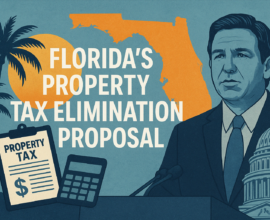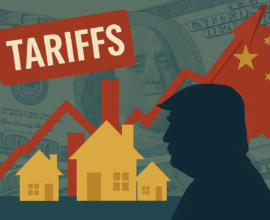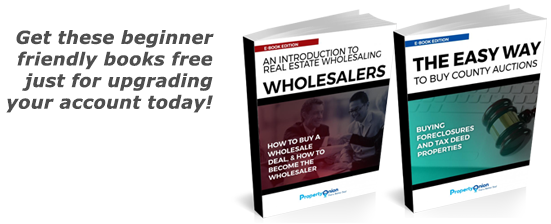How to Price Your Flip into the 2023 Softening Market
The housing market has softened in recent months as the Fed’s fight against inflation has resulted in soaring interest rates. Mortgage rates recently hit 6.75%, spurring the lowest demand in 25 years. Even with a softening housing market, deals still get done, albeit at lower prices.
Many home flippers have low upfront loan payments to give them time to complete the flip, followed by higher payments if they can’t get a deal in time.
While some homeowners can ride out the volatility, it is more difficult for home flippers. The home flipper model focuses on buying homes that need some help, fixing them, and selling them within one or two years. It’s more difficult for some home flippers to hold onto their properties due to the nature of their loans. Many home flippers have low upfront loan payments to give them time to complete the flip, followed by higher payments if they can’t get a deal in time.
Understanding how to navigate the softening market will help you get the best possible return for your flip under these conditions. Pricing your home too high can hurt demand, but pricing too low will leave money on the table. We will share some strategies that will help you maintain a competitive price when flipping your home as demand decreases.
Analyze the Competition
A competitive price from the start will increase the likelihood of selling your home without making changes to your listing.
Competitive pricing starts with knowing the selling prices of comparable homes in your area. You can use real estate listing sites to see how nearby home sellers have priced their properties. You could review the competition based on each home’s price points, square feet, and qualities.
Home buyers will look at several factors before deciding on a home, but price may become more important because of higher interest rates. Pricing yourself in the same range as comparable homes or even at a slight discount can help you sell your house sooner. Keeping the listing up for multiple months can make buyers believe your home hasn’t sold because the price is too high. A competitive price from the start will increase the likelihood of selling your home without making changes to your listing.
Enhance the Exterior
Your home’s exterior is the first thing a home buyer will see. A negative first impression can create an uphill battle as you encourage buyers to choose your home. You don’t have to go big with this project. A new coat of paint and washed windows go a long way. Giving the door a fresh paint job can make your home more inviting if you don’t have enough time or funds to repaint your home. Improving the exterior will make your home more attractive than competing homes in the area.
Consider Selling the Home Yourself
As investors face tightening profit margins, selling the home yourself can greatly impact how much money you get to keep. Working with a real estate agent is expensive and can turn a profitable investment into a net loss. You may have to give the agent 4% to 6% of the home’s selling price, further restricting your profit potential in a tightening market.
The extra holding cost and the price you weren’t able to negotiate can cost you much more than 4%- 6% of the sale price.
Selling your home without an agent allows you to set a more competitive price point. A more affordable home will draw potential buyers and help you keep more of the proceeds. The one glaring problem with this strategy is the extra work involved. You would have to do the marketing and open houses without an agent. However, homeowners have several strategies they can utilize.
Homeowners can post a “For Sale” yard sign, promote the listing on various sites, and reach out to friends, etc.
Homeowners have several strategies to increase foot traffic to their homes. You can promote the listing to your social media followers. Promoting your listing online, reaching out to potential buyers, and doing the open home tours yourself will take extra time, but you will reduce your overhead.
Of course, if you don’t do well with your promotions and the price negotiating, not using an agent to sell can cost you much more than you would save. The extra holding cost and the price you weren’t able to negotiate can cost you much more than 4%- 6% of the sale price.
Adjusting in a Buyer’s Market
The power dynamic has shifted from sellers to buyers this year. Buyers have more control during softening markets, and you may have to bend more than usual. While no seller wants to bend too much for closing costs, some buyers may ask you to make additional concessions. It’s easier to adjust in other areas, such as closing dates. Giving the buyer extra time to move into the home or speeding up the closing date at the buyer’s request can make your offering more competitive.
Buyers may also request additional contingencies for the home, such as financing and appraisal contingencies. The best buyer may offer a lower price than the top bid but have fewer contingencies.
Keep Your Emotions at Bay
Investors who let the numbers guide them instead of emotions put themselves in better positions to obtain fair prices for their homes.
Every investor has regrets. Some real estate investors wish they sold last year or believe they should make a higher return on their properties. Emotions can get especially difficult when selling a primary residence.
Potential buyers will not have the same emotions. Each buyer wants a good property at a fair price. The buyer will look at other properties in the area and assess multiple price points. Negotiations can get heated, and some offers can feel like insults after all your hard work.
You should never accept an offer that’s too low, but emotions can cause you to reject a fair price for your property. Your buyers will look at several data points before purchasing your home. They may look at similar homes, your area’s average price per square foot, and other metrics. Staying on top of these metrics will give you a better understanding of your local market’s current state. You can use these analytics to price your home and avoid letting emotions get in the way.
While making emotional decisions often translates into an overpriced offer, investors can also become misguided and sell their homes too low. Investors who let the numbers guide them instead of emotions put themselves in better positions to obtain fair prices for their homes.
Navigating the Real Estate Market
Inflation and rising interest rates present headwinds for real estate investors. These conditions can soften housing markets and property values. While the market conditions have changed, the playbook remains the same. Keeping up with developments in your local housing market and comparing prices of similar homes in your area will help you determine a fair, competitive price for your flip.








